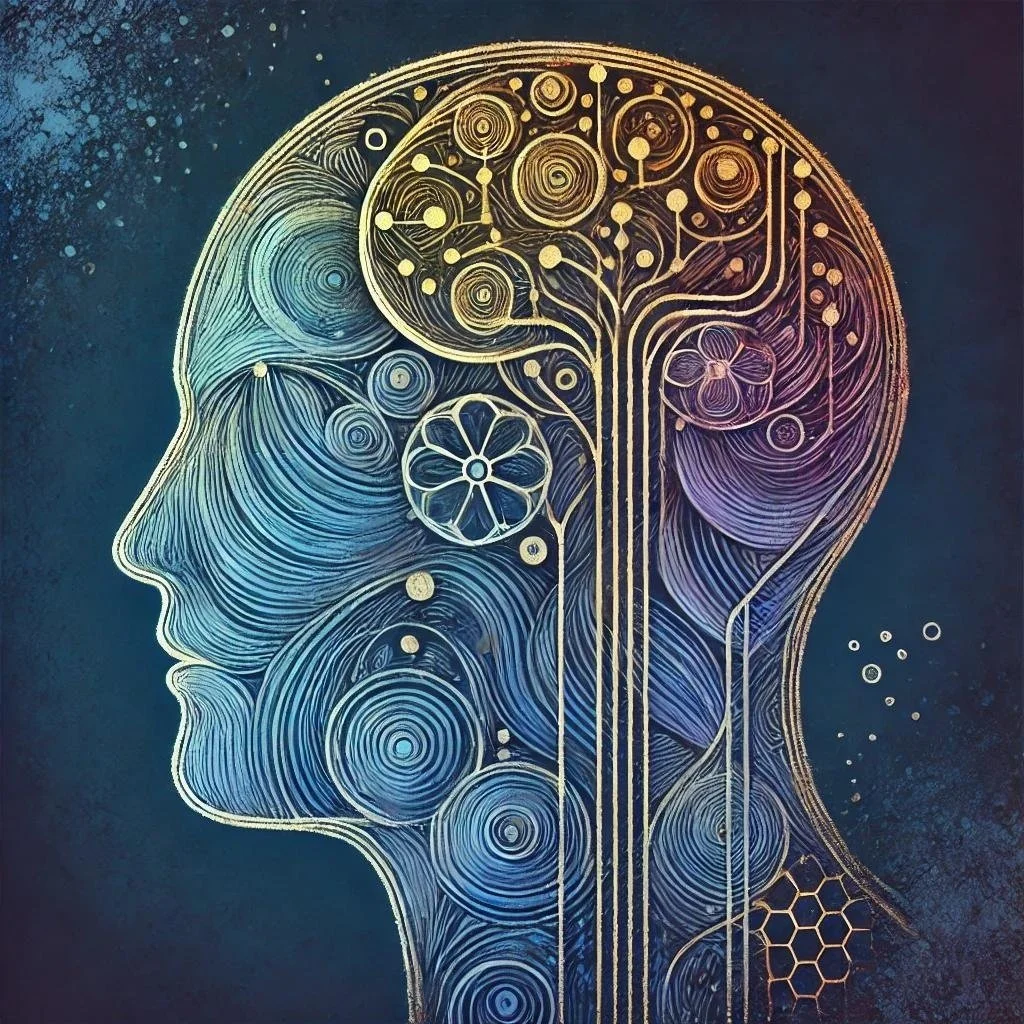Actionable Steps to Rewire brain circuits
Belief Change Techniques
As mentioned yesterday, I have spent considerable time shifting my thoughts and core belief systems. While it’s often uncomfortable, it remains an ongoing practice for which I am both grateful (for limitless growth and opportunity) and challenged (by the discomfort accompanying such work).
Transforming deeply entrenched beliefs involves accessing the subconscious mind and actively restructuring how we think, behave, and experience the present moment. This integrated approach combines three scientifically supported methods:
Theta Healing – Leveraging deep relaxation to access subconscious beliefs.
Cognitive Behavioural Therapy (CBT) – Structured cognitive restructuring to logically challenge and shift beliefs.
Mindfulness – Consistently bringing awareness to the present moment without judgement, reducing reactivity, and creating mental space to observe and alter habitual responses (Kabat-Zinn, 2003).
Theta brainwave states (4–8 Hz), characterised by deep relaxation and heightened suggestibility, facilitate subconscious memory recall and emotional awareness (Jensen et al., 2015). CBT systematically addresses distorted and maladaptive beliefs by logically reframing thought patterns (Beck & Haigh, 2014).
Step 1: Identify the Limiting Belief
Area of Life: Where do I feel most stuck or frustrated?
Recurring Thought: What negative belief frequently appears?
Complete:
“I can’t __________ because __________.”
“I am not __________ because __________.”
Example:
“I can’t start my own business because I lack experience.”
Step 2: Theta State Discovery (10-15 min daily)
Enter a relaxed meditative state (use guided meditation, binaural beats, or breathwork).
Set the intention to uncover the earliest memory or emotion linked to the limiting belief.
Allow thoughts or images to surface naturally, observing without judgement, fully present and mindful.
The mind may initially resist this process because core beliefs are emotionally charged, often triggering defensiveness and discomfort. Recognise discomfort as evidence you're authentically engaging in deep transformation.
Step 3: Immediate Insight Capture
Directly after meditation, note any memories, emotions, or phrases that emerge.
Highlight core beliefs discovered (e.g., “I am not worthy,” “I am unsafe”).
Example:
“I recall my teacher repeatedly saying I wasn’t ready for leadership roles.”
Step 4: Cognitive Examination (CBT)
Clearly articulate the belief identified.
Challenge its validity logically:
Is this belief always true?
What concrete evidence contradicts this belief?
Have others with similar limitations succeeded?
Identify cognitive distortions (e.g., overgeneralisation, black-and-white thinking).
Example Reframe:
Original belief: “I lack experience to start a business.”
Reframed belief: “I have successfully faced challenges and can learn as I progress.”
Step 5: Create Authentic Affirmations
Once clear on thoughts needing shifts, create affirmations anchored in genuine emotional resonance.
Example: Instead of generic affirmations, use emotionally grounded statements:
“I know what it feels like to confidently lead a team,” or
“I know what it feels like to trust myself fully in business decisions.”
Extra tip: Affirmations are most effective when anchored in genuine emotional resonance and experience.
Step 6: Behavioural Experimentation
Take immediate practical action to test the new belief.
Plan manageable challenges that provide evidence against the old belief.
Use mindfulness to stay fully present during these experiments, objectively observing your feelings and responses without judgement.
Example:
"I'll lead a small team project this week to build evidence of my leadership capabilities."
Step 7: Reinforce & Repeat
Celebrate small successes regularly.
Maintain a visible record of your achievements as evidence.
Consistently engage in Theta relaxation, CBT reframing, and mindfulness for lasting results.
The Role of Discomfort, Mindfulness, and Ancient Wisdom
Personal growth and genuine belief transformation are inherently uncomfortable because core beliefs are emotionally charged, causing resistance and defensiveness as you confront and shift them. Ancient spiritual practices universally acknowledge that discomfort and suffering are intrinsic to authentic personal growth (Teasdale & Chaskalson, 2011). Buddhism’s Four Dharmas of Gampopa, for example, emphasise discomfort as a necessary element in clarifying confusion and fostering deep insight:
Turning the mind toward spiritual awareness.
Ensuring spiritual awareness progresses along the path.
Clarifying confusion through mindfulness.
Transforming confusion into wisdom.
Mindfulness practices help navigate discomfort by training you to remain present, observant, and open, even amidst challenging emotions. Tomorrow, I'll explore further distinguishing positive (growth-oriented) discomfort from negative (avoidance-based) discomfort and how to navigate each mindfully.
Rewiring Challenge
Practice the phases interchangeably and consistently between for at least 21 days. (the minimum amount of time it takes to rewire neural pathways).
Build a routine that is achievable long term – can you do this for the rest of your life?
Set a goal to identify a limiting belief weekly.
*Note: You can work on more than one at a time.
What I'm working through now
The very sneaky belief I have noticed and been working to rewire is:
"I don't have time for this and that and anything."
I was shocked to see how often I mentally and physically say this in a day. I attempted to count but stopped once I got to 20. I never realised how deeply ingrained this was in me, especially when I believed I was always fully present.
The method I personally, I truly enjoy Theta meditations – so I start with that and then continue with being mindful of my thoughts throughout the day, followed by exposure. After trial and error I feel this works best for me. Thus, I recommend playing around with all the practices until something feels good and you notice a shift.
Let me know in the comments below which step you are most curious about!
Let’s rewire together!
References
Beck, A. T., & Haigh, E. A. (2014). Advances in cognitive theory and therapy: The generic cognitive model. Annual Review of Clinical Psychology, 10(1), 1–24. https://doi.org/10.1146/annurev-clinpsy-032813-153734
Jensen, M. P., Adachi, T., & Hakimian, S. (2015). Brain oscillations, hypnosis, and hypnotizability. The American Journal of Clinical Hypnosis, 57(3), 230–253. https://doi.org/10.1080/00029157.2014.976783
Kabat-Zinn, J. (2003). Mindfulness-based interventions in context: Past, present, and future. Clinical Psychology: Science and Practice, 10(2), 144–156. https://doi.org/10.1093/clipsy.bpg016
Teasdale, J. D., & Chaskalson, M. (2011). How does mindfulness transform suffering? II: the transformation of dukkha. Contemporary Buddhism, 12(1), 89–102. https://doi.org/10.1080/14639947.2011.564824

